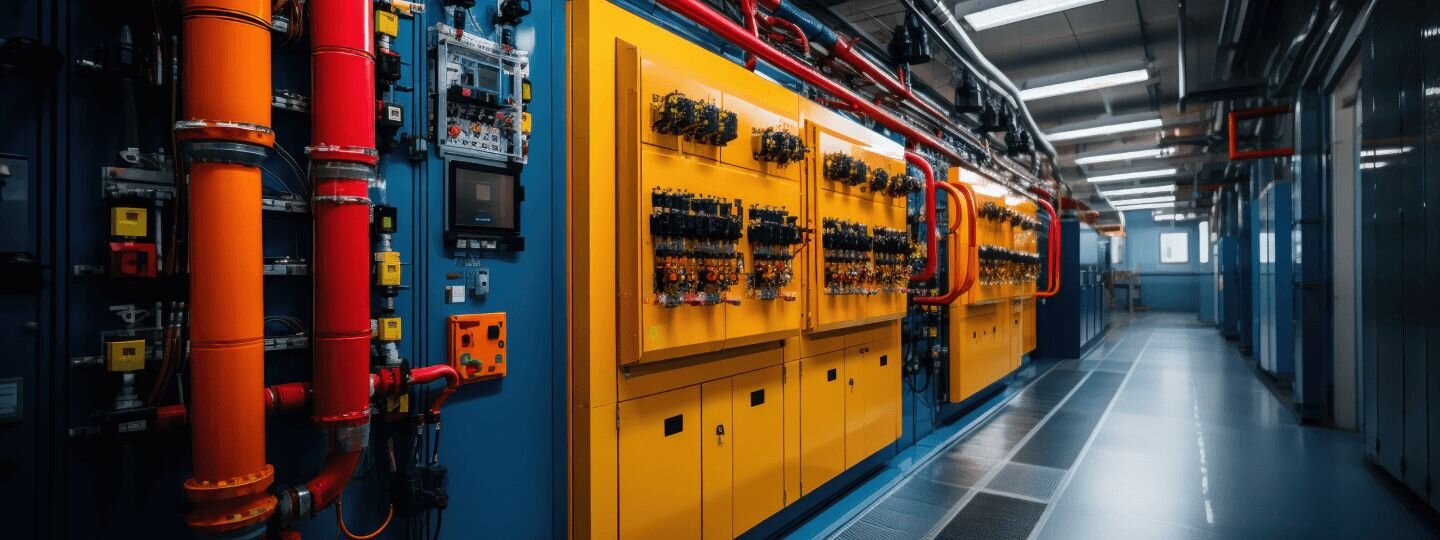
In the pursuit of sustainable development and reduced carbon emissions, the electrical industry plays a critical role. One innovative approach to improving energy efficiency in electrical systems is the adoption of double deck busbar arrangements (wherein a phase of busbars are stacked one above another), particularly in switchboards used for alternating current (AC) distribution. Traditional single-layer arrangement (Busbars stacked one after another), while effective, often face challenge of improper current distribution due to skin and proximity effects that lead to higher power losses and, consequently, increased energy consumption.
A closer look
Understanding Skin and Proximity Effects
The skin effect is a phenomenon observed in AC where the current tends to flow predominantly at the surface of the conductor, reducing the effective cross-sectional area available for current flow. This increases the resistance and power loss. Similarly, the proximity effect occurs when conductors carrying current are near each other, distorting the current distribution and further increasing the losses. These effects are particularly pronounced at higher frequencies and in conductors with larger cross-sectional areas.
The Double Deck Solution
The double deck busbar system offers a strategic layout by stacking busbars in two layers, one above another, reducing the impact of the skin and proximity effects. This arrangement allows for a more uniform current distribution, minimizing the aforementioned inefficiencies and improving overall energy efficiency.
Comparative Analysis Using Finite Element Method (FEM)
Studies using FEM simulations have shown that double deck systems provide a significantly more uniform current distribution compared to traditional single deck setups. This uniformity is crucial in reducing power losses and enhancing the thermal performance of the busbars. Figures derived from these simulations illustrate the stark differences in current density and temperature profiles between the two systems, underscoring the superior performance of the double deck configuration. As per the analysis, double deck systems are 1.5 times more efficient than the conventional systems.
Key Benefits
Applications of Double Deck Busbar Systems
Double deck busbar systems are utilized across various sectors, each benefiting from the unique advantages these systems offer
In conclusion
The exploration of Double Deck Busbar Systems in the document reveals a significant advancement in the electrical distribution industry, particularly for AC switchboards. By addressing the inefficiencies commonly associated with single-layer busbars, such as the skin and proximity effects, the double deck configuration offers a promising solution that enhances energy efficiency, safety, and operational reliability.
The adoption of double deck busbars mitigates the increased resistance and power losses caused by these effects through a strategic two-layered layout, which ensures more uniform current distribution and reduces thermal stress on the conductors. Finite Element Method (FEM) simulations validate these benefits, showing marked improvements in current density and thermal profiles compared to traditional setups.
Moreover, the double deck system excels in enhancing safety by reducing the risks associated with short circuits and arc flash incidents. Its compact design not only optimizes space within electrical panels—essential in environments like data centers and commercial buildings—but also offers easier maintenance and scalability, accommodating future infrastructure expansions with minimal disruption.
In various sectors, from industrial automation to data centers, double deck busbars demonstrate their capability to support continuous operation with enhanced efficiency and reliability, reducing downtime and operational costs. This makes them a vital component in modern electrical systems, aligning with the broader goals of energy conservation, safety, and sustainable development in the electrical industry.
Thus, the document concludes that double deck busbar systems represent a critical innovation in electrical distribution technologies, providing a robust, efficient, and scalable solution that meets the evolving demands of diverse applications while contributing to environmental sustainability.
Quick Links
Miniature Circuit Breaker | Air Circuit Breaker | Home Automation Systems | Switches and Sockets | Variable Frequency Drives | Energy Management System | IEC 61439 Panels | Moulded Case Circuit Breakers | AC DRIVE | Submersible Pump Motor Starter | Mobile Starter | Industrial Automation | Residual Current Circuit breaker | APFC controller | Power Factor Correction | Motor Protection Device | Medium Voltage | Vacuum Circuit Breaker | Programmable Logic Controllers | Human Machine Interface | Solar MCCB
Assistance Required?
Select an option to Contact Us